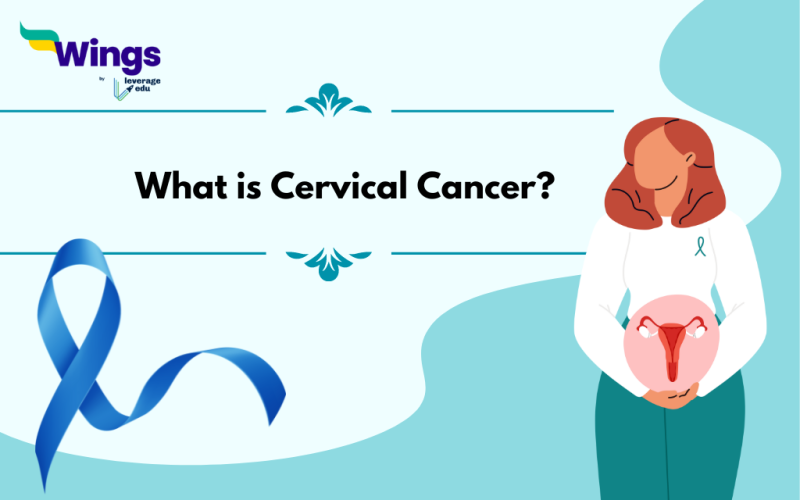In India, approximately 200 lives are lost daily to Cervical Cancer, a type of cancer that can be prevented, detected early, as well as successfully treated when identified on time. In today’s day and age, where Cervical Cancer cases are surging around the world, the statistics show us the harsh truth. This alarming rise stresses the critical importance of proactive measures of prevention as well as early detection. This surge of cases has become a trend and understanding the importance of vaccination (HPV Vaccine) and advocation for regular screenings needs to be foremost.
| Cervical Cancer Incidences | |
| Region | Percent of Cases |
| Asia | 20% |
| Europe | 10% |
| Latin America | 10% |
| Cervical Cancer Deaths | |
| Region | Percent of Deaths |
| Asia | 58% |
| Africa | 22% |
| Latin America | 9% |
Table of Contents
What is Cervical Cancer?
Cervical Cancer is a type of cancer that occurs in the cells of the cervix, which is the lower part of the uterus (womb) that connects to the vagina. Most cervical cancers are caused by persistent infection with human papillomavirus (HPV), a sexually transmitted infection. HPV is a group of viruses, and some types are considered high risk for the development of Cervical Cancer. There are around over 150 strains of HPV but a couple of them are the causes of Cervical Cancer. Additionally, Type 16 and 18 in particular are responsible for nearly 70% of all cases of Cervical Cancer. HPV can affect everyone and cause Cancers of the cervix, vagina, vulva, anus, penis, throat or mouth. Most strains of HPV are harmless, however there are a few that do cause cancer.
What are the Symptoms of Cervical Cancer?
The Symptoms of Cervical Cancer are:
- Unusual Vaginal Bleeding
- Pain and Discomfort during sex
- Unpleasant-smelling vaginal discharge
- Bleeding after menopause
- Leg pain
- Pelvic pain
- Weight loss
- Constant fatigue
Also Read: What is the Full Form of STD?
What are the Types of Cervical Cancer?
Additionally, Cervical cancers are categorised based on the specific cell type in which the cancer originated. The chief types include:
1. Squamous Cell Carcinoma: Accounting for approximately 90% of cervical cancers, squamous cell carcinomas arise from cells in the ectocervix.
2. Adenocarcinoma: Developing in the glandular cells of the endocervix, cervical adenocarcinomas are another common type. A less frequent variant known as clear cell adenocarcinoma also referred to as clear cell carcinoma or mesonephroma, falls under this category.
In some instances, cervical cancer may exhibit characteristics of both squamous cell carcinoma and adenocarcinoma, leading to a diagnosis of mixed carcinoma or adenosquamous carcinoma. Although exceptionally rare, there are cases where cancer originates in other cell types within the cervix.
What are the Risk Factors for HPV that will Increase Cervical Cancer?
Here are the Risk Factors for a person with an HPV infection who will most likely develop Cervical Cancer:
- Smoking
- Weak Immune System
- Obesity
- Reproductive Factors
Also Read: National Cancer Awareness Day
What is the Prevention of Cervical Cancer?
In 2006, researchers in Australia came up with a Vaccine that protected against two of the most deadly HPV strains, which are the cause of Cervical Cancer. Currently there 3 Types of HPV Vaccines:
- Cervarix (bivalent): It protects against HPV Type 16 and Type 18. It is recommended for females that are aged 9 to 14 in a 2-dose schedule.
- Gardasil (quadrivalent): It protects against HPV Type 16, Type 18, Type 6 and Type 11. Moreover, it is recommended for females aged 9 to 26 in a 2-dose or 3-dose schedule as per age. Per dose costs around Rs. 4000.
- Cervavac ((quadrivalent): It is India’s first indigenous HPV Vaccine that was launched in January 2023 and also targets the same 4 HPV Types as Gardasil. Per dose is expected to be around Rs. 200 to Rs. 400. This HPV Vaccine is currently undergoing evaluation for inclusion in India’s Universal Immunization Programme(UIP).
In the news! As per the recent budget announcement, the Government of India plans to vaccinate all females between the ages of 9 and 14 years in their schools or nearby government primary health centres over the next 3 years.
FAQs
Cervical cancers that remain localized within the cervix are typically addressed through a radical hysterectomy procedure. This surgical intervention entails the removal of the cervix, uterus, a portion of the vagina, and adjacent lymph nodes. The aim is to achieve a cure for the cancer and prevent its recurrence, as a hysterectomy has proven effective in these cases. Moreover, the prevention for cervical cancer is the HPV Vaccine that is available.
The first signs of cervical cancer are:
Bleeding following sexual intercourse
Experiencing pelvic pain or discomfort during sexual activity
Bleeding post-menopause
Irregular menstrual bleeding, including periods that are unusually heavy or prolonged
Watery vaginal discharge with a noticeable odour, or discharge containing blood
Cervical cancer is primarily caused by persistent infection with high-risk types of human papillomavirus (HPV). HPV is a sexually transmitted infection, and certain strains, particularly HPV 16 and 18, are strongly associated with the development of cervical cancer. Other risk factors for cervical cancer include a weakened immune system, smoking, long-term use of oral contraceptives, early initiation of sexual activity, multiple sexual partners, and a family history of cervical cancer. Regular screenings such as Pap smears and HPV tests can help detect precancerous changes early, allowing for effective intervention and prevention of cervical cancer.
Relevant Blogs
For more information about such informative articles, make sure to check the trending events page of Leverage Edu.
 One app for all your study abroad needs
One app for all your study abroad needs













